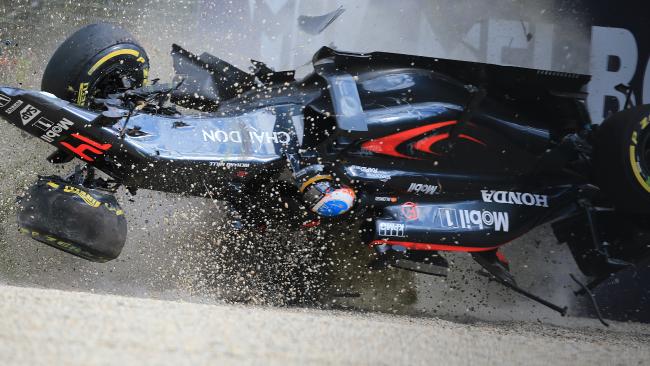FIA simulates Alonso crash, but with a mounted Halo
 |
| Alonso's crash |
As part of the research for the Halo cockpit protection device, the FIA simulated Fernando Alonso’s devastating crash at the Australian Grand Prix, but with the device attached to his McLaren.
With the Halo being the preferred choice over the aeroscreen concept that Red Bull developed, all the teams and drivers on the grid had their chance to test it out throughout the season.
The device is set to be introduced in the 2018 season, but the FIA are still doing extensive research into the concept, including taking existing incidents and mounting the cars with the Halo as a test.
FIA deputy race director and safety director Laurent Mekies explained that Alonso’s crash in Melbourne was particularly of interest to them.
"We looked specifically at that accident when we did the halo study," he said.
We have seen how the car landed, but the main question was what happens if the guy needs to come out. The answer is in two parts. The first part is the standard procedures are that the marshals get the car back on its wheels.
"We accept that if the guy feels good he will never wait for that, he will try to go out. It's not a great idea if you consider the car with the electrical system in it and we would prefer that he waits, but we understand it's that way.
"We put one of our chassis upside down with a halo, we put Andy Mellor [consultant for the Global Institute for Motor Sport Safety] into it as the worst case scenario and we asked him to come out exactly in Fernando's position and incredibly he did.
"So we feel in that case, the halo actually creates breathing space for the driver.
"When we showed that to the drivers, they were not impressed with Andy's speed to get out of the car, but they actually asked to try it before the halo is introduced so one day they will get that training." Planet F1
